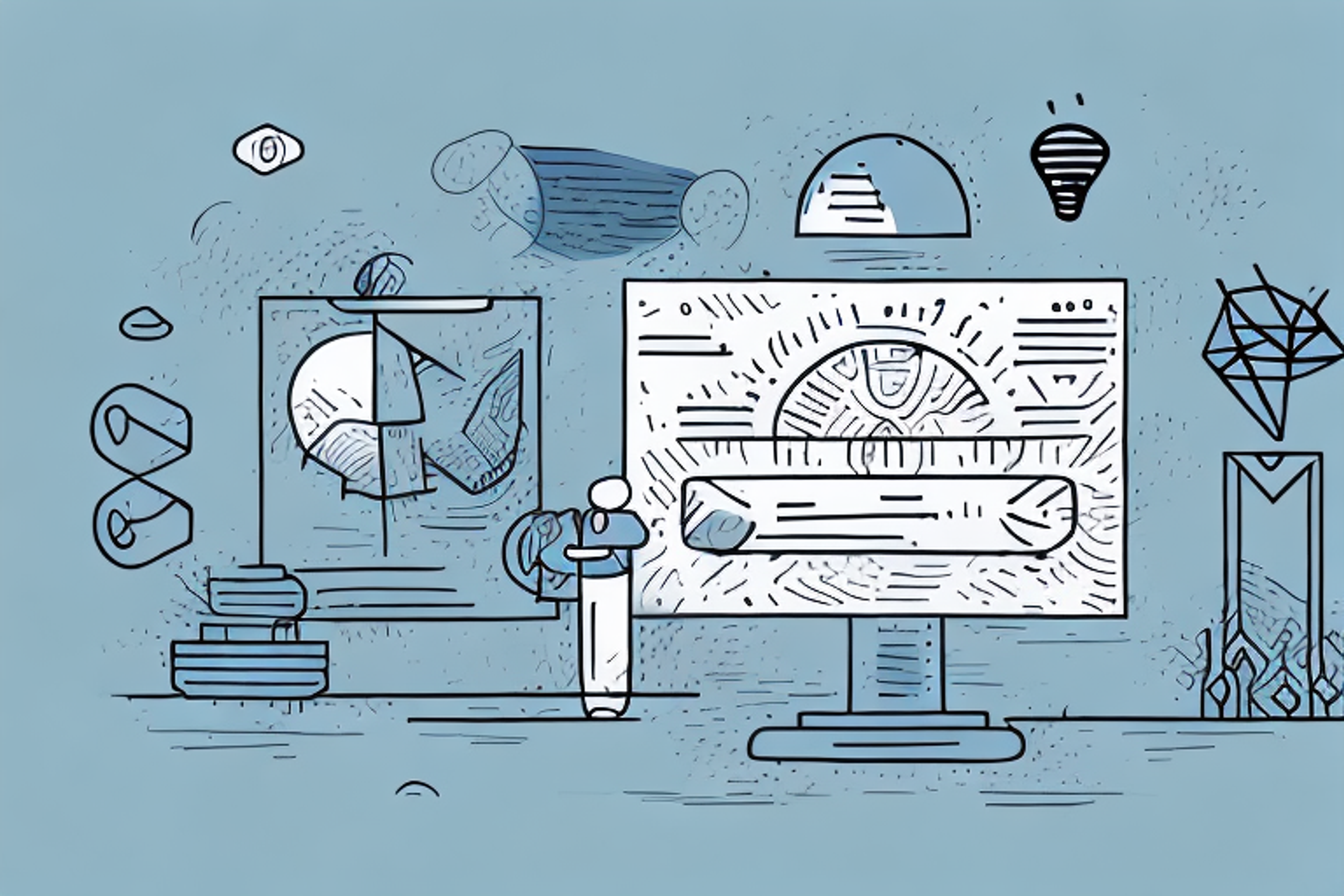Product Use Case: How to Define and Use It to Build Better Products
Learn how to define and effectively use product use cases to build better products.
Posted April 10, 2025

Table of Contents
When it comes to developing new products, there are a lot of moving parts to consider. From market research to user experience, there are dozens of factors that contribute to a product's success. One often-overlooked component of product development is the use case. A use case provides a detailed description of how a product is intended to be used, including the various scenarios in which it may be used and the steps required to use it effectively. In this article, we'll explore why a use case is important for product development, how to define a use case for your product, and best practices for incorporating use cases into your design process to build better products.
Why a Use Case is Important for Product Development
Before we explore the details of how to create a use case, let's first examine why it's important to have one in the first place. A use case serves as a roadmap for product development, providing vital information to designers, developers, and other stakeholders. This information can be used to guide design decisions, inform feature development, and ensure that all members of the development team are aligned on the product's goals and intended use. Without a clear and well-defined use case, it's easy for a product to become muddled or unfocused.
Understanding the Basics of a Use Case
At its core, a use case is a detailed description of how a product will be used in the real world. This includes identifying the various actors (or users) who may interact with the product, and the specific scenarios in which it will be used. A use case should also identify any potential roadblocks or challenges that users may face, and provide solutions and workarounds for these issues. Essentially, a use case helps to communicate the product's intended purpose and functionality in a way that is both detailed and easily understood.
How to Define a Use Case for Your Product
Defining a use case for your product requires careful consideration and direct input from your stakeholders. Here are some key steps to follow:
- Identify your user personas - who are your primary users, and what are their goals and needs?
- Brainstorm potential use scenarios - consider the various ways in which your product may be used. What problems or pain points does it seek to address?
- Map out user flows - for each use scenario, map out the steps required to accomplish the task at hand. Be as specific and detailed as possible.
- Identify potential roadblocks - what challenges might users face along the way? How can these be solved or worked around?
- Iterate and refine - use feedback from stakeholders to refine and improve your use case over time.
The Importance of User Personas in Defining Use Cases
One crucial element of defining a use case is understanding your user personas. User personas are fictional representations of your target users, complete with specific goals, needs, and behaviors. By understanding your user personas, you can better identify the specific use scenarios that are most relevant to your target audience. This, in turn, can help you create a more effective and user-friendly product that aligns with user needs and goals.
How to Analyze User Needs for Your Product's Use Case
To create an effective use case, you must first understand the needs and goals of your users. This requires a combination of market research, user testing, and direct feedback from stakeholders. By analyzing user needs and behaviors, you can gain insights into the specific use cases that are most important for your target audience. Through user research, you can identify common pain points, user goals, and behaviors that will inform the design of your product. For example, if your target audience is busy professionals, it may be important to create a use case that allows for quick and easy task completion while on the go. By understanding these needs, you can create a use case that aligns with user needs and goals.
Mapping Out Your Product's Use Case Scenarios
Once you have a solid understanding of your user needs and goals, it's time to start mapping out your product's use case scenarios. This involves identifying the various ways in which your product may be used, from start to finish. For example, if you're developing a project management tool, your use case scenarios may include creating a new project, assigning tasks to team members, and tracking progress over time. Be sure to include all possible steps required to complete each scenario, and identify any potential roadblocks or challenges that may arise along the way.
Bringing Your Product's Use Case to Life with Storyboarding
One effective way to bring your use case scenarios to life is through storyboarding. Storyboarding involves creating a visual representation of your use case, complete with sketches, diagrams, and other visual aids. This can help you and your stakeholders better understand the individual steps involved in each use case scenario, and identify any potential design challenges or issues. Storyboarding can also be used as a tool for communicating your use case to other members of your development team, ensuring that everyone is aligned on the product's goals and intended use.
Testing and Refining Your Product's Use Case
Once you've created a use case for your product, it's important to test and refine it over time. This can involve user testing, gathering feedback from stakeholders, and analyzing data to identify areas for improvement. By continually refining your use case, you can ensure that your product aligns with user needs and goals, and provides a seamless and user-friendly experience.
Using Your Product's Use Case to Guide Design Decisions
A well-defined use case can be a powerful tool for guiding design decisions. By aligning all members of the development team on the product's intended use and functionality, you can make more informed design decisions that are in line with user needs and goals. Your use case can also serve as a touchstone throughout the design process, ensuring that every feature and design element aligns with the product's intended purpose.
Incorporating Feedback and Iterating on Your Product's Use Case
One of the key benefits of creating a use case is that it's a living document that can be continually refined over time. By incorporating feedback from stakeholders and users, you can identify areas for improvement and make changes to your use case as needed. By continually iterating on your use case, you can ensure that it remains relevant and effective, and that your product continues to meet the needs of your target audience.
Best Practices for Communicating and Sharing Your Product's Use Case
Communicating your use case effectively is key to ensuring that all members of your development team are aligned on the product's intended use and goals. Here are some best practices to keep in mind:
- Use visual aids - include diagrams, sketches, and other visual aids to help communicate your use case
- Be clear and concise - use plain language and avoid jargon to ensure that everyone understands the use case
- Provide context - explain the rationale behind each use case scenario to help stakeholders understand why it's important
- Use feedback to refine your use case - incorporate feedback from stakeholders and users to continually improve your use case over time
Examples of Successful Products Built with a Strong Use Case
There are countless examples of successful products that were built with a strong use case in mind. One notable example is the ride-sharing app Uber. Uber's use case is centered around providing a simple and convenient way for users to hail a ride from their phone, without the need for cash or a traditional taxi. This use case has guided every aspect of Uber's design and development, from the intuitive app interface to the company's various pricing models and incentive programs. Another example is the project management tool Asana, which was designed with a focus on simplicity and ease of use. Asana's use case is centered around providing a streamlined way for teams to collaborate on projects and tasks, with a focus on reducing the need for email communication and other time-consuming tasks.
Common Mistakes to Avoid When Defining and Using a Product Use Case
While creating a use case can be a powerful tool for product development, there are also several common mistakes that can undermine its effectiveness. Here are a few things to avoid:
- Assuming you know your users - don't make assumptions about your users' needs and behaviors. Conduct user research to gain insights into what your target audience really wants.
- Being too broad - don't try to cover every possible use case scenario. Focus on the scenarios that are most relevant to your target audience.
- Not iterating - don't create a use cases and then forget about it. Continually refine and iterate on your use case as needed to ensure that it remains effective and relevant.
Conclusion: Leveraging the Power of a Well-Defined Use Case to Build Better Products
A well-defined use case can be a powerful tool for building better products. By providing a detailed description of how a product is intended to be used, a use case can guide design decisions, inform feature development, and align all members of the development team around the product's goals and intended use. By following the steps outlined in this article and incorporating use cases into your design process, you can create more effective and user-friendly products that meet the needs of your target audience.


















